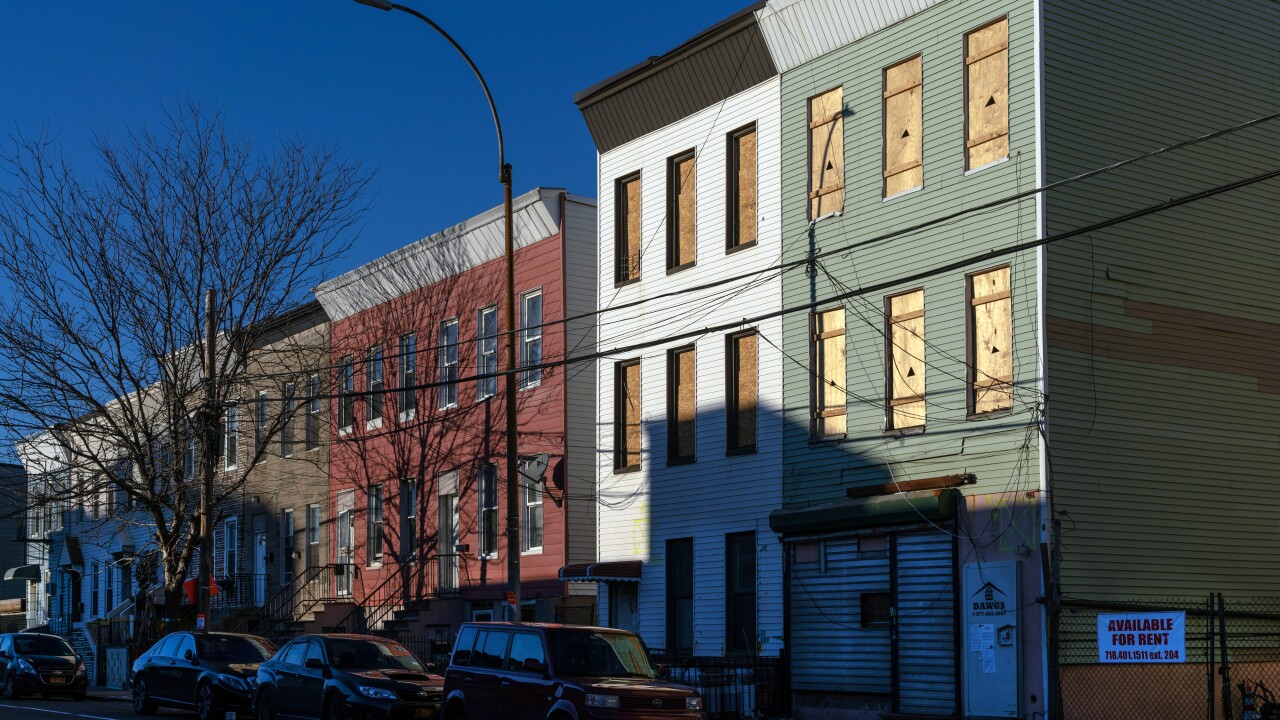Home prices in 20 U.S. cities rose at a slower pace than forecast in the year ended in April as declining affordability put a lid on appreciation.
The S&P/Case-Shiller index of property values increased 10.8 percent from April 2013, the smallest 12-month gain in more than a year, after rising 12.4 percent in March, the group reported today in New York. The median projection of 25 economists in a Bloomberg survey called for an 11.5 percent year-over-year increase in April.
Sellers’ ability to ask ever-higher prices has diminished as smaller wage gains make it difficult for some prospective buyers to qualify for financing. Cheaper properties, an easing of credit standards and employment opportunities accompanied by faster income growth would help brighten the outlook for residential real estate.
“We’re still expecting prices to appreciate, but at a much reduced rate,” said Kevin Cummins, an economist at UBS Securities LLC in New York. “The amount of homes on the market is still relatively low. You’re likely to see a less-booming pace of prices, and that’s a good thing.”
Stocks fell after the figures as investors watched developments in Iraq. The Standard & Poor’s 500 Index slid 0.2 percent to 1,959.37 at 9:31 a.m. in New York.
The S&P/Case-Shiller Index is based on a three-month average, which means the April figure was influenced by repeat sales transactions in February and March.
Home prices adjusted for seasonal variations increased 0.2 percent in April from the prior month, the smallest gain since February 2012 and less than the 0.8 percent median forecast in the Bloomberg survey. Unadjusted prices rose 1.1 percent.
Another report today confirmed the slowdown in appreciation as an index from the Federal Housing Finance Agency showed no change in April from a month earlier.
Property prices rose in 14 of 20 U.S. metropolitan areas in April from a month earlier, led by a 1.9 percent jump in Boston. Adjusted prices fell in Cleveland, New York, San Diego and Washington.
The year-over-year gauge, based on records dating back to 2001, provides a better indication of price trends than the monthly figure, the group has said. Economists Karl Case and Robert Shiller created the index.
All 20 cities in the index showed a year-over-year gain, led by an 18.8 percent increase in Las Vegas and an 18.2 percent advance in San Francisco. Cleveland showed the smallest year-over-year increase, with prices rising 2.7 percent.
Residential real estate is regaining its footing after stumbling at the start of the year. Purchases of previously owned homes climbed 4.9 percent last month, the biggest gain since August 2011, to a 4.89 million annualized rate, the National Association of Realtors reported yesterday. That report also showed price appreciation slowing as more homes go up for sale.
The number of homes on the market increased 6 percent from a year earlier to 2.28 million, the most since August 2012. At the current sales pace, it would take 5.6 months to sell those houses compared with 5.7 months at the end of the prior month.
Slower price appreciation and borrowing costs that have fallen since the start of the year will help support sales. The average rate on a 30-year, fixed mortgage was 4.17 percent in the week ended June 19 compared to 4.53 percent in the period ended Jan. 2, according to Freddie Mac in McLean, Virginia.
“Near-term economic factors favor further gains in housing: mortgage rates are lower than a year ago, the Fed is expected to keep interest rates steady until mid-2015 and the labor market is improving,” index committee chairman David Blitzer said in a statement. “However, housing is not back to normal.”
Still, Freddie Mac and the Mortgage Bankers Association last week both trimmed their home-sales forecasts for 2014, with the banker trade group predicting a decline in sales for the first time in four years, to 5.28 million for 2014.
Marianne Lake, chief financial officer for JPMorgan Chase & Co. in New York, called 2014 “a transition year” for housing and mortgage markets. Most owners have refinanced into lower rates and demand for purchase financing is weaker than it once was, she said at a June 11 conference.
“The combination of refi burnout as well as slow purchase improvement has led to the smallest production market in over 14 years,” Lake said. “Income growth isn’t where it needs to be, but we are still expecting that to be recovering over the course of the next several years.”
Federal Reserve policy makers said in a statement last week that “the recovery in the housing sector remained slow.” At the same time, progress in the rest of the economy allowed the Fed to trim their monthly bond purchases by $10 billion for a fifth straight meeting, to $35 billion, keeping them on pace to end the program late this year while avoiding a rapid increase in interest rates.
“The Committee’s sizable and still-increasing holdings of longer-term securities should maintain downward pressure on longer-term interest rates, support mortgage markets, and help to make broader financial conditions more accommodative, which in turn should promote a stronger economic recovery,” the committee said in the June 18 statement.





